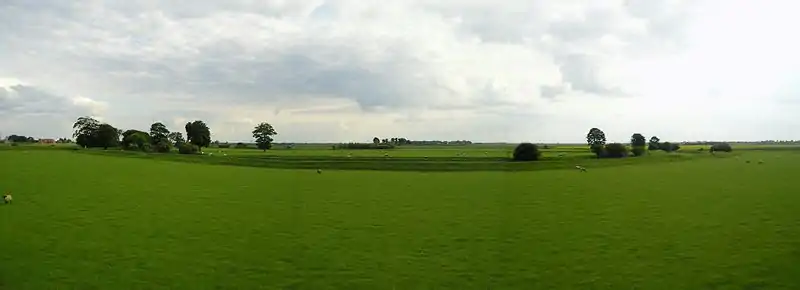Stonea Camp
Stonea Camp is an Iron Age multivallate hill fort located at Stonea near March in the Cambridgeshire Fens. Situated on a gravel bank just 2 metres (6 ft 7 in) above sea-level, it is the lowest hill fort in Britain. Around 500 BC, when fortification is thought to have begun at this site, this "hill" would have provided a significant area of habitable land amidst the flooded marshes of the fens. The site exhibits at least two phases of development over several hundred years of settlement, with a D-shaped set of earth banks surrounded by a larger, more formal set of banks and ditches.[1]
Roman control
The fort is a possible site of the battle of 47 AD mentioned by Tacitus, between the Iceni tribe and a Roman auxiliary force under governor Ostorius Scapula. Human remains have been found around the site including sword-marked adult bones and the cleaved skull of a child, indicating that the inhabitants were trapped and attacked within the settlement.
The remains of a multi-storey Roman tower have also been excavated within sight to the north of the Stonea Camp fortifications.[2] The building was possibly constructed to suppress further tribal rebellion or settlement at this site.
Excavation and restoration
Excavation work was carried out in 1980 by the British Museum, and restoration work followed in 1991 to recover the outer bank system and ditches which have been worn away by agriculture. The Cambridgeshire County Council Archaeology department has continued to carry out restoration work at the site. To prevent further damage by agriculture, the area is now designated as a pocket park[2] and scheduled ancient monument.[1]

See also
- List of hill forts in England
References
- Historic England. "Stonea Camp: a multivallate hillfort at Latches Fen (1012439)". National Heritage List for England. Retrieved 4 January 2014.
- Stonea Camp Archived 21 September 2013 at the Wayback Machine, Cambridgeshire County Council, accessed 20 September 2013